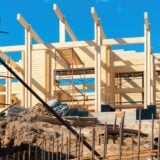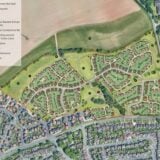Overall, country house prices in Scotland increased by 1.1% year on year, led by increases across the central belt, in the North and in the Borders, the latest rural property update report shows.
Agents have indicated that demand has been underpinned by an increase in discretionary buyers, with a notable rise in those from outside of Scotland.
But on a quarterly basis prices fell by 0.1%, the first quarterly fall for two years and it is a lack of supply that is underpinning the market, according to the analysis report from real estate firm Knight Frank.
There is also a variation in price depending on type of property. Year on year the price of cottages is unchanged, while large country houses increased by 0.9%, small country houses were up by 1.2% and farmhouses were up 1.3%.
The report says that a slight moderation in price growth reflects the slowdown and consolidation that is being felt across the market as a whole, as macro-political factors influence sentiment.
This has been most noticeable among prospective sellers, with an analysis of listings data showing a 10% drop in the number of prime listings with a value above £500,000 outside of Scottish cities in the second quarter compared with the same period last year.
The data shows that this was more pronounced in higher price brackets, with a 4.1% drop in new listings valued between £500,000 and £750,000, an 18% fall between £750,000 and £1 million and a 31% decline in new listings with a value of at least £1 million.
Average prices still remain around 20% off the pre-financial crisis peak in 2007. ‘This, combined with favourable currency movements for a number of international buyers since 2016, has resulted in a number of prospective buyers seeing relative value within prime Scottish markets at the current time, especially when compared with the rest of the UK,’ said Oliver Knight, residential research associate.
‘Against the political backdrop, it is likely that current market conditions will continue in the short-term with pricing expected to remain subdued. Our forecast for prime regional housing markets across the UK is for 0.5% growth in 2019 and cumulative growth of 8.2% between 2019 and 2023,’ he added.
Meanwhile, the report also shows that although the price of farmland fell by 1.7% in the first six months of 2019 to £4,197 per acre, the value of hill land rose by 3% to £773 per acre. Andrew Shirley, head of rural research, explained that Scotland’s incentives to plant trees continue to support hill land values.
‘Over the past 10 years top quality arable land, and hill land, have been the strongest performing land types in our index with growth of 85% and 72% respectively. While demand for trees may see hill land edge ahead of arable in the next few years, a lack of supply should help ensure the value of other land types doesn’t fall significantly further,’ he pointed out.
‘Scotland’s government is strongly supportive of tree planting and attractive grants are available, making forestry an attractive investment proposition. Given that increasing the number of trees is seen as an important part of the battle to mitigate climate change this situation looks unlikely to change, regardless of Brexit or other political changes,’ he added.





